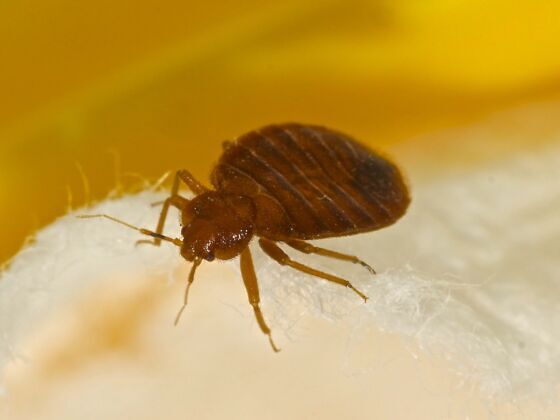Bed bugs, or Cimex Lectularius feed on human blood. They can be found virtually everywhere on the planet and do not care how many stars your hotel room is rated. Once almost completely eliminated from developed areas, they are now making a huge global return. Increased international travel is thought be a major contributing factor.


Bites
Bed bug bites can range from un-noticed to large, angry, itchy and inflamed welts. Physical reactions to bites varies, with some people have strong reactions and others having no symptoms at all.
The main problem associated with bedbug bites is a local skin infection, brought upon by scratching the bites with dirty fingers. A good cleaning with soap and water, several times per day, can help reduce this risk. Typical bite patterns may be noticed, especially several bites “in line” on the skin.
Itching is the most common problem with these bites and there are several methods to help reduce the need to dig. Oral antihistamines, such as Benadryl, have been used with success. Many have had very good luck with simple cortisone cream, applied directly to the bite sites. Heat has also been shown to work well with hot water, hot compresses and even blow dryers used to heat the area, reducing itch.
Detection
Check the bed, the pillowcases, carpets, headboard and seams of the mattress. Bed bugs can hide in tiny cracks and are generally not visible during the day.
Evidence of their activity may be noted, such as small blood stains, eggs, droppings or a characteristic odor. Simply looking at the bed sheets may not be good enough. Bed bugs can hide in seams of the mattress, in boxes under the bed or even cracks in the bed posts or frame.
Unfortunately, the best method for bed bug detection is catching them in the act. This is generally accomplished by keeping a flashlight near the bed and shining the light under the covers.
Prime movement time is one hour before dawn. Bed bugs tend to move fast. As stomach-turning as it may sound, try to catch one and show it to the hotel operator. Immediately.
Sleeping With The Enemy
The goal is to keep the bugs from getting to you while you sleep. There are several tricks to this and the key is to isolate yourself from the ground as much as possible.
- Bed bugs hate water and placing the bed posts in a small dish of water helps keep them from climbing up to you.
- Double sided tape, wrapped around bed posts can also help, as can petroleum jelly smeared to the bed frame and legs.
- Wrapping the mattress in plastic also helps the bugs from getting out, thus cutting them off from their food source (your blood).
Elimination of Infestation
Eliminating the infestation will not happen overnight and adjacent rooms are likely “buggy”, as well. If you are staying in a hotel, ask to change rooms as far away as possible from the original.
It will be safe to assume that the bugs have already infected your luggage and packed clothing. Cleaning with hot water and commercial clothes dryers (at the hottest setting the fabric allows) generally kills all bed bugs. Ironing clothing and sheets can also help with elimination.
Telling A Hotel
Reactions from hotel operators will vary. Some may apologize profusely and not charge you for the stay. Others may accuse you of bringing the bugs with you, in your gear. Some may not care at all.
The important thing to remember is that any place with a bed and fabric can harbor bed bugs, regardless of price paid for the room. Also, remember to approach the hotel operator with a touch of compassion – it may not be their fault.
Community Connection
Check other posts here at Matador where we ask Adventure Doc our health questions:, such as How to Stay Healthy During Flu Season?